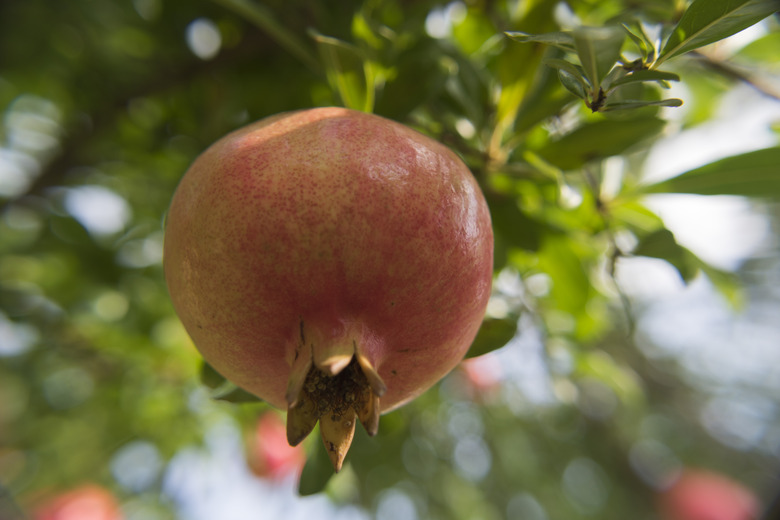How To Take Pomegranate Plant Cuttings
Pomegranates (Punica granatum, USDA zones 8-10) are hardly the new kids on the block. Humans have loved these jewel-tone fruits for centuries, but new information about the health benefits of their juice has thrust them once again into the limelight. The plants are also extremely ornamental in the garden. They grow and fruit best in warm, arid regions. If you want to try growing a pomegranate plant yourself, these deciduous shrub-like trees are quite easy to propagate with seeds or cuttings.
Basics of Growing Pomegranates
Pomegranates seem like very complex fruit, with all those brightly colored fruity seeds inside the outer fruit shell, separated from each other by a bitter rind. But they are actually not difficult to grow in an appropriate location. Pomegranates are native to the Middle East and South America, so it's no surprise that they prefer hot, dry climates. But the trees can grow in many warm regions if planted on a site with well-draining soil and lots of sunlight.
The trees are self-pollinating, but you'll get better fruit if you plant several and allow for cross-pollination. Don't heap on the fertilizer as the tree needs very little, and don't maim the tree in the name of pruning. Only trim back a little to decrease disease and increase fruit size.
Propagating Pomegranate From Seed
You can start propagating pomegranate from seed. This is considered the easiest way to get new plants. Seeds sprout well even if you just sprinkle them on the soil surface. They germinate quickly in warm climates and don't require dormancy.
Seeding is usually the cheapest method of propagation. On the other hand, seeds don't always produce plants or fruits that are exactly like the parents, so starting from seed is a big roll of the dice. This is why seed propagation is not usually used for commercial production.
Pomegranate Cutting Propagation
If you want to be sure your new pomegranate plant will be exactly like the parent plant, it's better to use pomegranate cuttings. Cuttings are just what they sound like: Pieces of branch cut from a living tree that will root in water or potting medium.
Use hardwood cuttings for the easiest pomegranate cutting propagation. These are branch tips taken in winter, not spring, although cuttings taken in spring or summer will also root. Hardwood cuttings represent last year's growth, not brand-new – or soft – growth, so they don't require misting. Take 8-inch cuttings from branches about the diameter of a pencil in January or February. Make the cut is just below a bud node.
Bundle the cuttings together and plant them in a well-draining, sunny location. Dig a hole 3 inches deeper than the length of the sticks and bury them in the hole. In the spring, dig them up and plant them in the soil with only the top half of each sticking out. Keep the soil moist but not wet and wait for them to show signs of growth.
